Buyback and Leverage Effect on EPS and Capital
Share buybacks, or the purchase of treasury shares, reduce the number of shares outstanding with direct effects on key balance sheet indicators. First, reducing the free float mechanically increases EPS on a like-for-like basis: a reduction in shares outstanding is accretive to earnings per share because it lowers the denominator in its formula. The effect is often called piloted EPS inflation: Bank for International Settlements notes that buybacks tend to amplify EPS without changing net income, as opposed to dividends, which do not affect earnings per share. Net income remains unchanged or grows little, but the lower number of shares makes earnings per share look better, which supports stock market valuations.
From a capital perspective, buybacks can alter the capital structure; they take cash out of the cash account or increase debt if financed with new debt. According to a BIS study, before 2020, one in four companies financed buybacks by taking on new debt instead of using equity. This pushed up the debt-to-equity ratio, or leverage. In other words, while a normal buyback costs the company disposable cash, a leveraged buyback program increases net debt, reducing capital strength. Raymond James reminds us that the buyback is used precisely to “manage the capital structure and the debt/equity ratio.” However, BIS notes that in pre-pandemic rallies, they were not the main cause of the overall increase in debt, as many firms continued to generate profits even if, in contrast, in crises such as 2008 the flow of equity was reversed.
Buying windows, blackout periods, and trading volumes
Listed companies follow strict rules when buying their own shares on the open market: under SEC Rule 10b-18, a company’s repurchases may not exceed in a single day 25 percent of the average daily volume over the past 4 weeks. It is also mandated that purchases be made with only one broker per day, at a price no higher than the best bid or last current price. In effect, these health limits prevent overly aggressive purchases in a single day and constrain companies to deferred purchases. Raymond James details that the volume of purchases must remain under 25 percent of average trading; a maximum of one block trade per week is allowed, as long as the average limit is not violated.
Another crucial aspect is the so-called blackout periods and trading windows: normally, a company suspends buybacks in the period leading up to the announcement of quarterly earnings to avoid accusations of insider trading. Raymond James reports that many companies adopt a blackout policy that begins about two weeks before the quarter ends and ends 48 hours after the announcement of financial results. Open buybacks occur during the most transparent periods, i.e., after a quarterly report, and stop in blackouts before the quarterly reporting season. Some firms circumvent this constraint by scheduling automatic buybacks with a plan that provides predetermined trades even during the blackout, providing immunity from insider trading challenges.
The impact on trading volumes is significant: when large companies reinvest, their buybacks account for a significant share of total daily trading. S&P and DJI data show that, in the fourth quarter of 2024, the twenty largest companies concentrated 49 percent of all buyback programs. Simply put, the top stocks see additional demand coming from the same company, which can support or stabilize prices even in volatile phases. On the other hand, the permanent reduction in shares outstanding lowers the available float and thus average volumes may also decline over time: the mix of SEC restrictions and blackouts means that, during permitted periods, companies can add a significant component to overall trading, but are forced to taper near financial data. Overall, buybacks introduce a dependence on the company’s set of buyback windows: prices can be affected by both the influx of cash on buyback days and the blocking of purchases during sensitive periods, when the market role reverts entirely to external supply and demand.
Impact of buybacks on blue chips 2023-2025: Apple, Microsoft, ExxonMobil
In the three-year period 2023/May 2025, buybacks played a major role in the stock performance of major U.S. stocks.
Apple has continued to invest heavily in buybacks, spending the mind-boggling sum of as much as $77.6 billion in 2023 alone. Over the past 11 years, the company has devoted more than $674 billion to share buybacks, reducing its outstanding shares by more than 41 percent since 2013. The accounting result has been an acceleration in earnings per share: Apple’s revenues were roughly flat in the first half of 2024, but thanks to fewer shares, EPS rose by 9 percent and about one-third due precisely to the reduction in float. In the stock market, Apple reaped the benefits of this leverage: the stock gained about 49% in 2023 and an additional 30% in 2024. Much of this exceptional performance can be attributed not only to strong product demand, but also to the share buyback program, which has supported its price by the same dynamics as EPS. It should be noted, however, that in 2025 the stock had a correction: after touching an all-time high at the end of 2024, it closes May 2025 around breakeven on 2024, signaling that a slowdown in buybacks, or the natural saturation of the effect, may reverse some of the gain.
Microsoft also used a buyback strategy. In 2023, the company bought back 69 million shares, spending $18.4 billion. That’s down from 28 billion in 2022, a sign of a more prudent strategy, but still significant; buybacks funded entirely with cash. In terms of price, Microsoft saw a similar surge as Apple: the stock closed 2023 at +58.2% and 2024 at +12.9%, peaking at the close in July 2024. Again, it can be seen that the buyback policy, together with solid cloud and AI revenues, helped push the stock to new highs, improving EPS and injecting investor confidence. In both cases, Apple and Microsoft, their stocks are among those with the highest total buyback volume in the world: as Axios reports, Apple alone spent over $104 billion in 2024: 24 percent more than 2023. Microsoft and other mega corporations added together come close to half a trillion dollars of free cash flow to reinvest in their own stock in the first quarter of 2025 alone.
Lastly, ExxonMobil has been a case in point in the energy sector: thanks to massive post-pandemic earnings, Exxon has expanded its program and in 2023/2024 has collectively spent nearly $30 billion in annual buybacks, with incremental plans of $20 billion per year projected through 2025. In the first quarter 2025, Exxon has already spent $4.8 billion in buybacks, keeping in line with the $20 billion target per fiscal year. The effect on earnings per share was positive: dilution decreased despite high coupon issuance to $4.3 billion in Q1’25. In the stock market, after a peak in October 2024 closing at $122.12, the stock closed 2024 up +11.3% on 2023. The 2022 rally saw +87% thanks to highs in oil prices, which then stabilized, but buybacks offered support for the stock even in volatile phases: the strong appreciation through fall 2024 is partly attributable to the increase in buybacks. Significantly, in the face of political pressures and tightening environmental regulations, Exxon has nevertheless continued to return cash: as CEO Darren Woods stated, despite shareholder calls to cut expenses, the company will continue to invest in growth while confirming the massive buyback.
Systemic risks of a slowdown in buybacks
While the buyback mechanism is a driving force in the stock market to date, it brings with it systemic risks in the event of a slowdown, and we investors need to ask ourselves how much of this rise is really sustainable. First, there is the regulatory risk: the SEC recently introduced greater transparency, requiring daily reporting of the amount of shares bought back, with a rule passed in May 2023 requiring detailed tables and reports on staff buying back shares around the announcements. However, this regulation, seen by some as curbing opacity, was challenged and annulled in December 2023 by a federal judge. So, the regulatory framework remains uncertain: public opinion with some lawmakers continue to see buybacks as a financial and social problem, while political pressure to limit or tax them has not waned. After all, a 1 percent tax on share buybacks, introduced by the Inflation Reduction Act, has been in effect in the U.S. since 2023, with the aim of discouraging share purchases at the expense of productive reinvestment. Despite being a relatively low tax, it increases the opportunity cost of buybacks and signals a less favorable climate; further tax or regulatory interventions, in addition to transparency rules, could gradually erode the attractiveness of buybacks as a capital management tool.
Tighter financial conditions may compress buybacks; the recent rise in interest rates makes debt more expensive: highly indebted companies that financed buybacks with loans in past years now have to pay higher interest, so they will be less inclined to raise debt to return to the stock market. In addition, if the business cycle slows, many CEOs, as evidenced in surveys of U.S. CFOs, become cautious about future cash flow. A November 2023 FactSet report indicates that 2023 marked the lowest level of new buyback approvals since 2016: the reason is that, in the face of high borrowing rates and macro uncertainty, many companies prefer to strengthen their balance sheets rather than distribute capital to shareholders. In turbulent environments, therefore, profits are redeployed internally, not spent on buybacks. A deterioration in operating performance, such as a slump in product demand or a recession, would reduce available free cash flow: in the absence of fresh cash, further reliance on buybacks could stress corporate liquidity. It is important to note that, in economic downturns, recapitalization flows reverse dramatically: in 2008, many companies issued new shares rather than buying them, which means that in a new shock own purchases could disappear altogether or even turn negative, causing the artificial support for prices to fail.
Systemic risk should also be considered: many analysts today wonder whether the market is now anesthetized by these massive interventions. If the buybacks slow abruptly, stock prices are likely to suffer. Many stocks, especially the big tech and industrial champions, have rallied in recent years partly because of the infusion of cash from multi-year buyback plans. Without the constant buying of these companies themselves, speculative downward pressure could manifest itself more forcefully. As a 2023 analysis warns, if monetary policy consolidates and economic indicators deteriorate, downward pressure on the stock market is on the horizon: buybacks, while not accounting for the entirety of shareholder returns, have become a non-negligible element in sustaining valuations. Dependence on this makes the market vulnerable, and external factors such as regulation, deteriorating cash flow, and high rates can undermine what otherwise appears to be an invisible uptick based on financial engineering operations and not on improving operating fundamentals.
Conclusions
Some experts praise buybacks as tools to optimize capital, while others criticize them as mere tricks to inflate valuations, even though they prove to be an extraordinary capital management tool, capable of artificially inflating profitability indicators and providing support for stock prices in favorable market phases. However, the leverage introduced by buybacks, can prove to be a double-edged sword with a profound impact on the balance of companies. Against a backdrop of high rates, uncertain cash flows and possible regulatory intervention, a slowdown or setback in buyback plans could remove the artificial support that has sustained many blue chips, exposing markets to sudden corrections and accentuating volatility. The real test for companies and investors will be to distinguish real value, based on fundamentals, from value created through financial transactions. It is a delicate balance, and the future may hold surprises.











